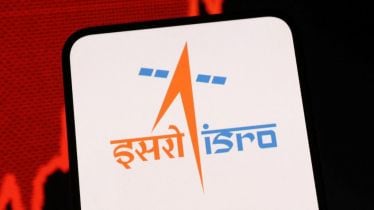As the 79th Independence Day comes near on 15th August 2025, that changed the fate of almost 300 million people in 1947. India’s Independence Day also falls on the same date that the Indian Space Research Organisation (ISRO) was officially established in 1969. An institution launched under the visionary guidance of Dr. Vikram Sarabhai, also known as the father of India’s space program. His dream was to use space technology for the nation’s development and scientific advancement.
Over the past 56 years, ISRO has grown into a global space powerhouse. From launching its first satellite, Aryabhata, in the 1970s to becoming the first Asian nation to reach Mars on its maiden attempt, ISRO has evolved into one of the world’s most respected space agencies. Here’s a look at how India’s space journey unfolded. Here are ISRO’s most remarkable achievements in over five decades.
Aditya-L1 (2023)
Aditya L-1 is the first satellite launched by ISRO to study the Sun. The satellite was launched on September 2, 2023. Primary objective of the satellite is too observe the solar corona, chromosphere and solar winds
These objectives being fulfilled by L-1 help scientist at the ISRO organisation to predict space weather events that can disrupt satellites and even power grids. The satellite has been positioned at Lagrange point.
PSLV-C37 (2017)
ISRO’s Polar Satellite Launch Vehicles or (PSLV) are renowned world over for thier reliability, One such satellite was launched on February 15 2017, named PSLV C-37 . The launch of satellite of C-37 made by global headlines garnering praise since it launched 104 satellites along with it a world record.
This satellite was carrying Cartosat -2D and 103 other satellites along with it from countries including US,UAE and Kazakhstan. This mission led to ISRO becoming a leader in the commercial satellite launch market that provides precision and affordability.
Aryabhata and SLV-3 (1975)
India’s premier space research organisation began it’s journey on the 19th of April 1975. The launch of Aryabhatta satellite marked the beginning of this organisation, the satellite weighed 360 kilograms and launched from the Soviet Union’s Kapustin Yar. Aryabhatta satellite was created for scientific experiments in X-ray astronomy, solar physics, and aeronomy.
However some technical issues with the satellite has reduced it’s mission duration. Nonetheless the learnings from its failure of satellite design and operation were used in other mission.
SLV-3 (1980)
Just five years later, post Aryabhatta launch India celebrated another milestone- the Satellite Launch Vehicle-3 (SLV-3). On July 18, 1980, ISRO successfully placed the Rohini satellite into orbit, marking India’s first indigenous satellite launch. This mission transformed ISRO from a fledgling program dependent on foreign help into a self-reliant launch vehicle developer. It laid the foundation for advanced rockets that would carry heavier payloads, send spacecraft to the Moon and Mars, and launch hundreds of satellites for global clients.
Indian National Satellite System (INSAT) Series (1983)
The INSAT series of satellites improved India’s telecommunication network, these were first launched in 1983. Today, with nine operational communication satellites in geostationary orbit, the Indian National Satellite (INSAT) system ranks among the largest domestic communication satellite networks in the Asia-Pacific region. The system is equipped with over 200 transponders, INSAT supports a wide range of services from television broadcasting and satellite news gathering to tele-education, telemedicine, weather forecasting, disaster warnings, and even Search and Rescue operations.
RISAT-1 (2012)
The launch of RISAT-1 on April 26, 2012, introduced India’s first radar imaging satellite. This satellite was capable of capturing high-resolution images even through clouds, darkness, and heavy rain.
Operating in the C-band, RISAT-1 became crucial for agricultural monitoring, forestry management, soil moisture assessment, and disaster response, especially during floods and cyclones.
Synthetic Aperture Radar (SAR) in the satellite gave India a surveillance capability vital for both civilian and strategic purposes.
Mangalyaan (2013)
Mangalyaan was ISRO’s most celebrated achievement till date, the satellite was launched on November 5, 2013. Additional on September 24, 2014, it made India the first country to reach Mars on its maiden attempt, an accomplishment even NASA hailed as extraordinary. Costing just $74 million, less than many Hollywood space films, Mangalyaan carried instruments to study Mars’ surface, atmosphere, and mineral composition. It revealed insights about Martian dust storms and the planet’s climate while showcasing India’s ability to conduct complex interplanetary missions on a modest budget.
GSLV and GSAT Missions
ISRO’s Geosynchronous Satellite Launch Vehicle (GSLV) program started n 2001. This satellite allowed India to launch heavier payloads into geostationary orbit. The various achievements of GSAT missions include satellite D5 launched in 2014. This satellite used India’s first fully indigenous cryogenic engine, and GSLV Mk III-D1 (2017), which launched GSAT-19, India’s heaviest satellite at the time.
The GSAT series of communication satellites strengthened India’s digital infrastructure.
(a). GSAT-6A launched in 2018 aimed to improve mobile connectivity in remote areas with its unique unfurlable antenna, though contact was lost after launch.
(b). GSAT-7, launched in 2013 was built for the Indian Navy, enhanced maritime communications across the Indian Ocean, improving naval coordination and security.
NAVIC (2018)
In 2018, India completed NAVIC (Navigation with Indian Constellation), a homegrown navigation system covering India and 1,500 km beyond its borders. With seven satellites in geostationary and geosynchronous orbits, NAVIC provides accurate positioning for defence, disaster management, and navigation in remote areas. Unlike GPS, which is controlled by the US, NAVIC gives India strategic autonomy in location-based services, crucial for security and sovereignty.
Chandrayaan Missions
Chandrayaan-1 that was launched in 2008 is another of ISRO’s most famous achievements.
This was India’s first lunar mission that made the groundbreaking discovery of water molecules on the Moon, overturning decades of assumptions. Chandrayaan-2 launched in 2019 aimed for a soft landing on the Moon’s south pole. While its lander crashed, the orbiter continues to provide valuable data.
Chandrayaan-3 launched in 2023 achieved a successful landing near the lunar south pole on August 23, 2023, making India the first country to do so. This region holds scientific significance due to its permanently shadowed craters, which may store frozen water.
